Category: Press
PRESS
October 5, 2012 – November 3, 2012
“In ’74 I photographed the cannibals in New Guinea. They treated me OK but they didn’t make you feel relaxed…I managed to escape unscathed though, I’m pretty good at that.”
A visit to Bailey’s studio. A treasure! A box of Polaroids from 1974.
When visiting an artist as versatile as Bailey, one should always expect the unexpected. Despite this, it was a great surprise to discover a box of Polaroids taken in Papua New Guinea in 1974, fascinating for their subject matter as well as for their artistic merit.
What followed was a happy-dance and a handshake confirming the opening of “Papua Polaroids” on October 4th.
In 1974 David Bailey visited the New Guinea wilderness and pointed his Polaroid camera at the bow and arrow carrying people, resulting in photographic portraits that have been hidden from view in his archive ever since.
Today indigenous peoples are gazed at and possibly even envied by us for the seemingly simpler and more understandable world they inhabit. The nostalgic aura of Polaroid film intensifies this sense of longing for a more natural and primal way of life.
Daniel has long been interested in Oceanic Art. It is therefore a particular pleasure to find this interest mirrored in Bailey’s work of the 70s.
October 11, 2012 — October 14, 2012
For the inaugural Frieze Masters art fair in London we will be showing the third part of our exhibition trilogy “From Silverpoint to Silver Screen”, a special one-man exhibition of Andy Warhol drawings from the 1950s.
These outstanding drawings are from the personal collection of one of the 20th century’s most significant artists, presented to the public for the first time, 50 years after their creation. We are afforded a unique and comprehensive insight into Andy Warhol’s work in the 10 years following his departure from the grey city of Pittsburgh, during the period of his artistic emancipation in New York. This is an opportunity to get to know him as the grand draftsman that he was.
Excerpt from the catalogue text by Sydney Picasso:
…
And his thirst bore him through, every image was seized, and while moments of repose produced slow and steady line drawings, time passing drove him to tracing, blotting, repro, collage; in this series we observe an impressive roster of techniques. The theme is not idleness, it is haste, an irrepressible drive to get on with it, to record and thus “live” this new life he has embraced, which will turn out to be tragically short. His “Walk on the Wild Side”: thirty odd years of total immersion, and I believe revelry, in a world he had only glimpsed before arriving on the streets of New York. “I was nobody, I came from nowhere,” he repeated. And as he was willing to literally try anything, we witness here such odd subjects as children in groups, facial studies, and the infamous child shooting up “America’s nightmare,” a mercenary drawing for a CBS series of recordings based on childhood addiction: Andy won the “prize” for art direction for this project and the image became iconified in what would become the first of his many record covers. This initiated yet another chapter in his endless forays into media, to the point that certain later images would portray the Daily News heading directly incorporated in the painting, such as in Daily News, 1962, portraying Eddie Fisher and Liz Taylor’s breakup.
Special Preview: 9 Oct, 3 – 8 pm
Professional View: 10 Oct, 11 am – 7 pm
Exhibition: 11 – 13 Oct, 12 – 7 pm
14 Oct, 12 – 6 pm
Regent’s Park, London
Booth F13
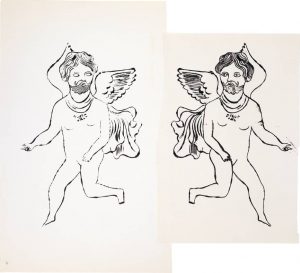
September 14, 2012 – October 19, 2012
These recent drawings combine Neal Fox’s visionary depictions of the debauched and iconoclastic characters whose ideas have helped shape our collective consciousness with vivid colours that enhance the fantastical and psychedelic atmosphere of the images. Drawing on his extensive knowledge of the mythology of pop and consumer culture, Fox’s new drawings are infused with layers of narrative and populated by a vast range of celebrities, lunatics, and geniuses.
In these imagined landscapes Captain Beefheart sells a vacuum cleaner to Aldous Huxley at the Doors of Perception, while elsewhere Jesus is crucified on a McDonald’s sign and popular culture comes to resemble a neon nightmare. We present an exhibition of re-imagined reality and collaged dreams, the familiar made unfamiliar and strange.
September 20, 2012 — September 23, 2012
For our first exhibition at Expo Chicago we are pleased to offer an overview of our extensive collection in the form of a selection of works on paper from 1950 – 1980. Our mixed booth is a representation of the gallery’s program, and all works hail from past and future exhibitions.
We present a varied taste of the art that came out of the mid-to-late twentieth century. Gathered here is a diverse juxposition of black and white photos, including a number of NASA prints, works by German artists such as Georg Baselitz, Matt Mullican’s stick figures, and to complement our upcoming London exhibition of David Bailey’s Papua New Guinea polaroids, we will have on show a number of his Planet of the Apes polaroids.
Please join us for our opening at Booth 503 on 19th September from 3 – 9 pm.
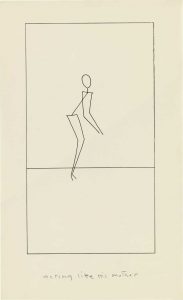
September 7, 2012 – September 29, 2012
“There shall be wings! If the accomplishment be not for me, ‘tis for some other. The spirit cannot die; and man, who shall know all and shall have wings…”
Leonardo da Vinci
Daniel Blau presents an extraordinary exhibition of rare NASA photographs and photographic collages of Mars. The collages are composed of vintage silver gelatin prints and are unique works of art.
Until the Mariner 4 probe’s successful fly-by in July 1965, Mars had only been seen through terrestrial telescopes. All of a sudden photographs were transmitted to earth that were of such clarity that we could almost touch the surface of the planet. Viking 1 continued where the Mariner missions left off, and delivered wonderfully detailed photographs of this mysterious planet, named after the Roman God of War and long subject to speculations regarding the possibility of alien life.
What began as a race to put a man on the moon progressed further and further into space, spurred on by limitless ambition and curiosity. These photographs evoke an incomparable time in history when technology was developing at an incredible rate and the impossible became not only possible, but visible for the entire world to see.
March 16, 2012 — March 25, 2012
Daniel Blau is pleased to present Old Master Photographers: Photographs from the 1850’s alongside our exhibition of Andy Warhol drawings from the 1950’s. These photographers are the original masters who developed the science and the aesthetics of photography – the first to truly experiment with and push the boundaries of the medium.
Warhol’s sensual early drawings coalesce brilliantly with the images from the first decades of photography – both selections have the capacity to teach us direct lessons on what it means to create, rather than to produce, as well as portraying the genesis of artist and medium.
It’s interesting to see what has happened in the 100 years between the generation of these photographs and of Warhol’s drawings. The photograph was a revolutionary development, which caused many frustrated artists to swap their paint brushes for cameras and to utilize photography as their main artistic media.
As a new discovery we’re showing a series of photographs of a tapestry taken by the Bisson brothers for the Duke of Luynes in 1855 – 6 successive photographs arranged side by side to form a large picture of about 70 x 100 cm!
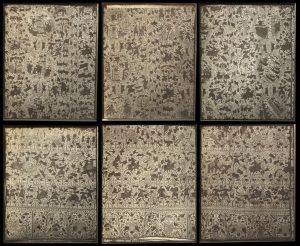
March 16, 2012 — March 25, 2012
“Drawing as an exploding plastic metaphor – graphite becomes an extension of the artist’s fingers”.
Quote from the catalogue essay by Sydney Picasso.
The name “Andy Warhol” brings to mind colourful silkscreens and cans of soup: glossy, finished products arranged neatly on gallery and museum walls. However, his early drawings exhibit a profound technical ability, a draftsman’s skill that reveals a lesser-known Warhol.
We will be showing a collection of extremely rare works from the 1950’s. These are Warhol’s manual experiments with mechanical reproduction and have not seen the light of day for over 50 years. His process of tracing photographs from projected images and blotting the ink onto other pieces of paper is a rudimentary form of printmaking involving multiple stages. We are excited to exhibit these moments of metamorphosis, testaments to a period of revolution in Warhol’s life and artistic career.
Whilst the drawings produced during his first years in New York were often commercial ventures, they embody the embryonic talent so apparent in his later art. These are preliminary drawings, stills from the film of artistic progress, intentional artworks in themselves. They are playfully filled with dotted lines and occasional patches of colour which contrast with the neutral dead surfaces of his subsequent work. This treasure trove from Warhol’s personal collection gives us invaluable new insight into his first ten years as an artist in New York and represents his budding genius. From kids in Central Park to gun-wielding men and a boy shooting up, these drawings are Warhol’s artistic take on the darker side of society.
TEFAF (The European Fine Art Fair)
STAND 443
MECC, 6229 GV Maastricht
The Netherlands
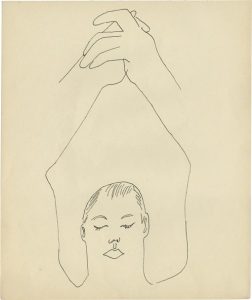
March 29, 2012 — April 1, 2012
This exhibition includes works by some of the greatest photographers of the first generation, such as Alinari, Baldus, Bisson, de Beaucorps, Le Secq, Marville and Nègre and others.
We have selected the pictures not only for their artistic merit but also for the condition and quality of each print. Furthermore the focus of this small selection is on the transitional years 1850-60.
This is a particularly interesting time of rapid developments in photography. The invention of the glass negative and albumen paper gave the artists important choices of “soft” or “sharp focus”, depending on the selected materials.
This difference is nicely illustrated in the two prints from the same negative by Baldus of Michaelangelo’s Slave. One is printed on salt paper and the other on albumen paper and both prints are beautiful in their own rights.
Some artists preferred the traditional paper negatives like for example de Beaucorps who in 1859/60 still used them on his extended travels in Europe and North Africa. Others like the Brothers Alinari or Bisson produced photographs of unsurpassed sharpness and clarity from glass negatives on albumen paper.
The Brothers Bisson made some of their greatest prints at this time. The large and mysterious photo of the Roman architectural detail is an outstanding example of their artistic excellence and technical achievements.
AIPAD
Park Avenue Armory
67th Street and Park Avenue
New York City
Opening: March 28, 2012, 5 – 9 pm
Exhibition: March 29 – 31, 11 – 6 pm / April 1, 11 – 5 pm
Gustave Le Gray will not be included here, as his works are being shown in our special exhibition “Thoroughly Le Gray” at the rooms of C.G. Boerner.
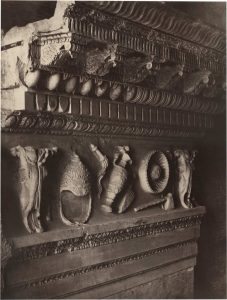
March 27, 2012 — April 1, 2012
A special exhibition at the rooms of C.G. Boerner in NY
As Picasso was the central star for painting and Man Ray for modern photography, Gustave Le Gray was the prominent figure early 19th Century photographers had to conquer before they could make a name for themselves.
Like many of his colleagues, Le Gray was a painter before he enthusiastically embraced the new medium of photography. By 1849 he had entered the Paris photo scene with his calotype landscapes taken in Fontainebleau and from there found further influence teaching photography to a group of students including Du Camp, Le Secq, Mestral and Tournachon, who in turn would also go on to achieve great fame in photography.
His ground breaking inventions rapidly set new standards for size and quality. In 1857, his Vague Brisée, a “snap-shot” of a small boat with wind-filled sails and a breaking wave in the foreground, was shown to an approving and fascinated audience.
As a technical perfectionist, Le Gray was above all a great painter with the camera.
In addition to the excellent Vague Brisée three new discoveries will be shown, calotypes taken at Fontainebleau castle. Rare treasures from the estate of his colleague Le Secq, they appear to be the only surviving examples of these images.
We are thrilled to present these works to our American audience and consider our gallery very fortunate to reintroduce these pictures to the œuvre of Le Gray.
Opening: March 27, 6 – 9 pm
Exhibition: March 28 – 30, 10 – 6 pm / March 31 & April 1, 11 – 5 pm
C.G. Boerner,
23 East 73 Street (3rd floor)
New York, NY 10021
+1 / 212 / 772 7330
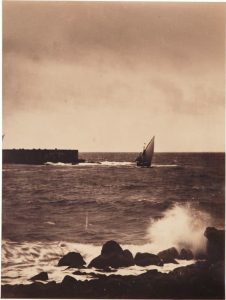
December 13, 2011 — January 31, 2012
Daniel Blau is pleased to present a unique collection of rare vintage NASA photographs. These incredible pictures depict the wonder and awe of space travel.
These photographs have become part of our collective visual memory for the twentieth century; pictures that markedly symbolise the speed and power of post-war technological development at a time when Cold War tension was rife between the US and Russia. And so began the space race; the period of the 1960’s that saw the first man on the Moon. Missile technology, taken from Germany at the close of WWII, set the technological precedence for manned space crafts to orbit the Earth, eventually landing on lunar soil: a period in human history incomparable to any other; photographed, with immense beauty, for the whole world to gaze in astound.
These are not simple snap-shots by an amateur, taken with a Kodak box, but the result of the combined efforts of thousands of workers and scientists at NASA. Indeed, these are the most expensive photographs ever produced. To see these prints in the flesh is an experience as close to bouncing on lunar soil as any of us will ever get. These magnificent landscapes can be compared to Gustav Le Gray’s large prints of Fontainebleau or his seascapes. Today we treasure these vintage prints for their artistic quality and as permanent visual evidence of a time when the future seemed so close…
‘…Our first shock comes as we stop our spinning motion and swing ourselves around so as to bring the Moon into view. We have not been able to see the Moon for nearly a day now, and the change is electrifying. The Moon I have known all my life, that two-dimensional small yellow disk in the sky, has gone away somewhere, to be replaced by the most awesome sphere I have ever seen. To begin with, it is huge, completely filling our window. Second, it is three-dimensional. The belly of it bulges out toward us in such a pronounced fashion that I almost feel I can reach to touch it…’
– Michael Collins, Apollo XI, July 1969 (NASA Sp-350, 1975, p. 207)
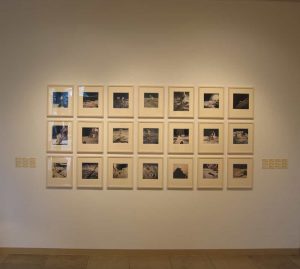





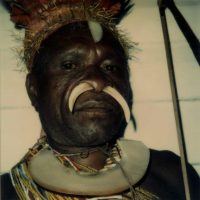

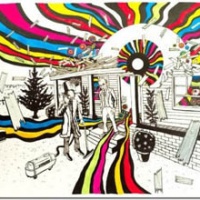

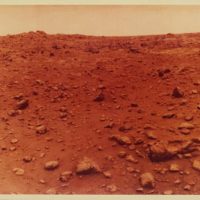

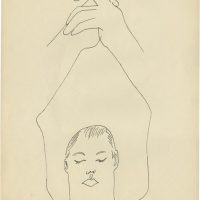
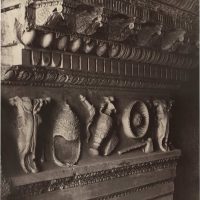
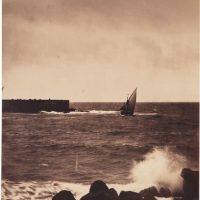

 +49 89 29 73 42
+49 89 29 73 42